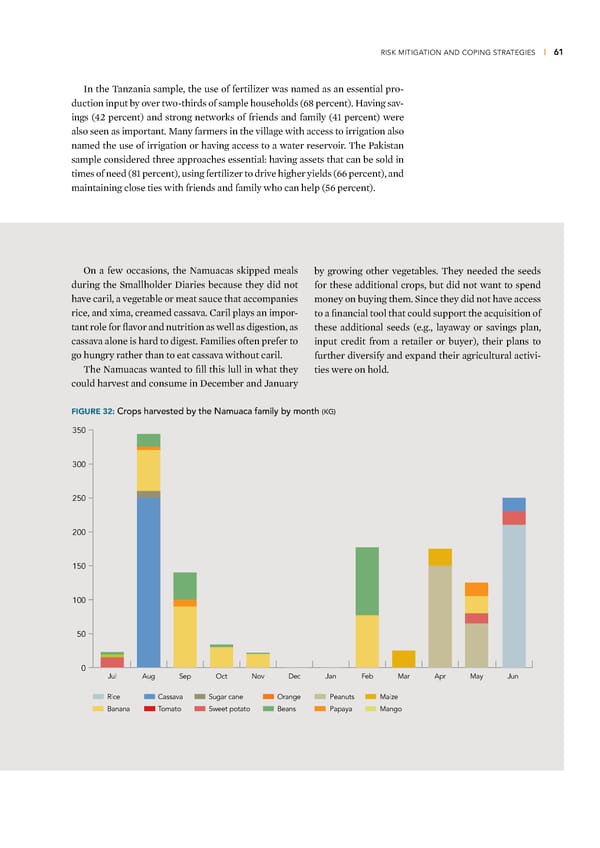RISK MITIGATION AND COPING STRATEGIES | 61 €n the Œan—ania sample, the use of fertili—er was named as an essential pro- duction input by over two-thirds of sample households (¢¡ percent) Having sav- ings (“‘ percent) and strong networs of friends and family (“… percent) were also seen as important –any farmers in the village with access to irrigation also named the use of irrigation or having access to a water reservoir Œhe aistan sample considered three approaches essential having assets that can be sold in times of need (¡… percent), using fertili—er to drive higher yields (¢¢ percent), and maintaining close ties with friends and family who can help (”¢ percent) ¦n a few occasions, the ˜amuacas sipped meals by growing other vegetables Œhey needed the seeds during the Smallholder ‰iaries because they did not for these additional crops, but did not want to spend have caril, a vegetable or meat sauce that accompanies money on buying them Since they did not have access rice, and xima, creamed cassava †aril plays an impor- to a financial tool that could support the acuisition of tant role for flavor and nutrition as well as digestion, as these additional seeds (eg, layaway or savings plan, cassava alone is hard to digest amilies often prefer to input credit from a retailer or buyer), their plans to go hungry rather than to eat cassava without caril further diversify and expand their agricultural activi- Œhe ˜amuacas wanted to fill this lull in what they ties were on hold could harvest and consume in ‰ecember and Žanuary FIGURE 32: Crops harvested by the Namuaca family by month (KG) 350 300 250 200 150 100 50 0 Jul Aug Sep Oct Nov Dec Jan Feb Mar Apr May Jun Rice Cassava Sugar cane Orange Peanuts Maize Banana Tomato Sweet potato Beans Papaya Mango
 Financial Diaries with Smallholder Families Page 76 Page 78
Financial Diaries with Smallholder Families Page 76 Page 78